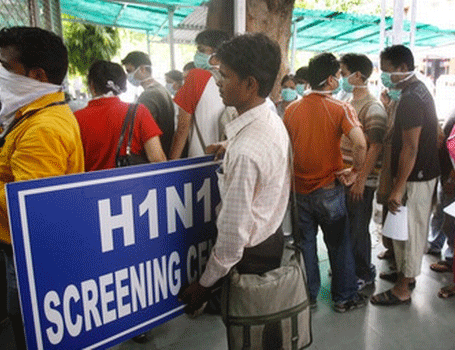The number of H1N1 cases reported in the State since January 2015 till date, is the highest in seven years. As many as 3032 cases of swine flu were reported in the first four months of the current year.
Even during the 2010 outbreak, which had triggered a panic in the State, the number of cases reported then was just 2552. However, this time around, the cases have exceeded the numbers reported in a calender year in the past seven years.
Out of the 3,000-plus cases reported in the State, a total of 2,075 cases were recorded from Bengaluru Urban and Rural districts and Bruhat Bengaluru Mahanagara Palike (BBMP) limits. As many as 1481 persons tested positive for the flu and ten deaths were reported in BBMP limits alone. In Bengaluru Urban, 23 deaths were reported.
Mysuru and Tumakuru districts have recorded 120 and 134 cases respectively.
Not just the number of cases increased shockingly, this year, even the outbreak of the flu was seen for unusually long period.
Ideally, according to doctors, the swine flu is reported in large numbers between the August and October period.
However, this year, the numbers were growing even after January and February.
Dr H Paramesh, who heads a State government on H1N1, told Deccan Herald that even as the numbers had dropped considerably, mild infections would continue to exist in the community.
Even as the number of cases reported has gone up considerably, the number of deaths recorded is lower when compared to previous years. In 2010, 120 deaths were reported as against 85 in 2015.
“Mortality rate for the flu has been similar to any other flu cases. Morbidity, however, has been higher this time,” he explained.
It is believed that those who were not exposed to the virus in the previous outbreak and thus not developed immunity are the ones that are infected this time around, Dr Paramesh explained.
While several studies have shown that the rise in the number of cases could be attributed to the mutation of the virus, there has been no scientific evidence to support the same, say doctors.
Dr Shashidhar Buggi, Medical Director, Rajiv Gandhi Institute of Chest Diseases (RGICD) said, “This time around, expecially in the month of February, we have witnessed a shocking rise in the cases.
Now, it has gradually subsided. From nearly a hundred suspected cases each day, the numbers have come down to a maximum of 10 to 15 at the RGICD.”
Year Positive cases Deaths
2009 1799 135
2010 2552 120
2011 108 16
2012 878 48
2013 122 19
2014 303 34
2015 3032 85
